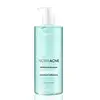What's inside
What's inside
 Key Ingredients
Key Ingredients

 Benefits
Benefits

 Concerns
Concerns

 Ingredients Side-by-side
Ingredients Side-by-side

Water
Skin ConditioningAmmonium Lauryl Sulfate
CleansingCocamidopropyl Betaine
CleansingCaprylyl/Capryl Glucoside
CleansingSodium Chloride
MaskingPEG-120 Methyl Glucose Trioleate
CleansingCaprylyl Glycol
EmollientZinc PCA
HumectantGlycerin
HumectantCamellia Sinensis Leaf Extract
AntimicrobialCitric Acid
BufferingDisodium EDTA
DMDM Hydantoin
PreservativeIodopropynyl Butylcarbamate
PreservativeParfum
MaskingPropylene Glycol
HumectantBenzoic Acid
MaskingPotassium Sorbate
PreservativeSodium Benzoate
MaskingWater, Ammonium Lauryl Sulfate, Cocamidopropyl Betaine, Caprylyl/Capryl Glucoside, Sodium Chloride, PEG-120 Methyl Glucose Trioleate, Caprylyl Glycol, Zinc PCA, Glycerin, Camellia Sinensis Leaf Extract, Citric Acid, Disodium EDTA, DMDM Hydantoin, Iodopropynyl Butylcarbamate, Parfum, Propylene Glycol, Benzoic Acid, Potassium Sorbate, Sodium Benzoate
Water
Skin ConditioningDisodium Laureth Sulfosuccinate
CleansingCocamidopropyl Betaine
CleansingLauryl Glucoside
CleansingSodium C14-16 Olefin Sulfonate
CleansingDisodium Cocoamphodiacetate
CleansingPhenethyl Alcohol
MaskingNiacinamide
SmoothingPentylene Glycol
Skin ConditioningPEG/PPG-120/10 Trimethylolpropane Trioleate
Laureth-2
Cleansing1,2-Hexanediol
Skin ConditioningSalicylic Acid
MaskingRosmarinus Officinalis Leaf Extract
AntimicrobialCamellia Sinensis Leaf Extract
AntimicrobialSodium Hyaluronate Crosspolymer
HumectantSodium Hyaluronate
HumectantSodium Acetylated Hyaluronate
HumectantHydrolyzed Sodium Hyaluronate
Skin ConditioningEthylhexylglycerin
Skin ConditioningSodium PCA
HumectantPanthenol
Skin ConditioningZinc PCA
HumectantAloe Barbadensis Leaf Juice
Skin ConditioningWater, Disodium Laureth Sulfosuccinate, Cocamidopropyl Betaine, Lauryl Glucoside, Sodium C14-16 Olefin Sulfonate, Disodium Cocoamphodiacetate, Phenethyl Alcohol, Niacinamide, Pentylene Glycol, PEG/PPG-120/10 Trimethylolpropane Trioleate, Laureth-2, 1,2-Hexanediol, Salicylic Acid, Rosmarinus Officinalis Leaf Extract, Camellia Sinensis Leaf Extract, Sodium Hyaluronate Crosspolymer, Sodium Hyaluronate, Sodium Acetylated Hyaluronate, Hydrolyzed Sodium Hyaluronate, Ethylhexylglycerin, Sodium PCA, Panthenol, Zinc PCA, Aloe Barbadensis Leaf Juice
 Reviews
Reviews

Ingredients Explained
These ingredients are found in both products.
Ingredients higher up in an ingredient list are typically present in a larger amount.
Camellia Sinensis Leaf Extract is derived from the leaves of the tea plant. Black tea, green tea, and oolong tea are all harvested from this plant.
This ingredient has many skin benefits:
This ingredient contains polyphenols, a strong antioxidant. Antioxidants help fight off molecules that damage skin cells.
On top of that, the antioxidants in green tea neutralize free-radicals from the sun. This gives the skin some extra UV protection, but should not replace sunscreen.
Many components of tea have anti-inflammatory properties.
Polyphenols and L-theanine help soothe the skin and reduce irritation. The caffeine in Camellia Sinensis Leaf Extract helps calm inflamed blood vessels.
Other compounds found in tea include: Vitamin Bs, linoleic acid, magnesium, calcium, iron, and zinc.
Research has shown both drinking Camellia Sinensis Leaf Tea and applying it to the skin can help boost skin elasticity and hydration. Studies also show using tea extract may reduce sebum, or oil, production.
Learn more about Camellia Sinensis Leaf ExtractCocamidopropyl Betaine is a fatty acid created by mixing similar compounds in coconut oil and dimethylaminopropylamine, a compound with two amino groups.
This ingredient is a surfactant and cleanser. It helps gather the dirt, pollutants, and other impurities in your skin to be washed away. It also helps thicken a product and make the texture more creamy.
Being created from coconut oil means Cocamidopropyl Betaine is hydrating for the skin.
While Cocamidopropyl Betaine was believed to be an allergen, a study from 2012 disproved this. It found two compounds in unpure Cocamidopropyl Betaine to be the irritants: aminoamide and 3-dimethylaminopropylamine. High-grade and pure Cocamidopropyl Betaine did not induce allergic reactions during this study.
Learn more about Cocamidopropyl BetaineWater. It's the most common cosmetic ingredient of all. You'll usually see it at the top of ingredient lists, meaning that it makes up the largest part of the product.
So why is it so popular? Water most often acts as a solvent - this means that it helps dissolve other ingredients into the formulation.
You'll also recognize water as that liquid we all need to stay alive. If you see this, drink a glass of water. Stay hydrated!
Learn more about WaterZinc PCA (or "zinc salt") differs slightly from zinc itself. PCA stands for pyrrolidone carboxylic acid. However, Zinc PCA comes from zinc.
It can help reduce redness, regulate sebum, and promote the general healing process of the skin.
Zinc PCA tends to be especially useful for those with oily, acne-prone skin. It's certainly an ingredient worth trying out!
Learn more about Zinc PCA